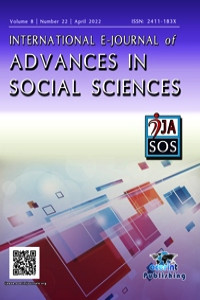LEVELS OF FEARS AMONG STUDENTS OF THE FIRST CYCLE OF BASIC EDUCATION IN OMAN: A STUDY ACCORDING TO THE "SPENCE" SCALE
Abstract
The study aimed to determine the levels of fears among students of the first cycle of basic education in Oman, to reveal the most common symptoms of their fears, and to investigate the extent to which there are statistically significant differences between the degrees of fears according to the variable of gender and age. The study used the Mix Method; The Spence Anxiety Scale was applied in order to identify the fears of a sample of 162 male and female students, and 9 interviews were conducted with the parents of the students who got the highest scores on the Spence Scale. The results of the study revealed that about 37% of the students suffer from moderate to high levels of anxiety. The results also showed that the behavioral symptoms of fear were the most common among the study sample by 50%, and came at the forefront of "silence", followed by cognitive symptoms by 21.9%, most notably "fear of entering the toilet", then physiological symptoms by 15.6%, and from the most common of them was "trembling". The least noticeable symptoms of fear by parents were the emotional symptoms and appeared in a percentage of 9.4%, and the most noticeable was "feeling nervous, confused and crying in dreams". According to the results, there were no statistically significant differences between males and females in the total score of the scale and its dimensions, except for the specific fears dimension; the differences were significant in favor of females. Also, there were no statistically significant differences between children according to the age variable in the total degree of the scale and its dimensions, except for the obsessive dimension; the differences were in favor of older children; at the age of (8-9) years.
Keywords
References
- Al-Biltagi, M., & Sarhan, E. A. (2016). Anxiety Disorder in Children: Review. J. Paedi. Care. Inol, 1(1), 18-28.
- Rask, C. U., Elberling, H., Skovgaard, A. M., Thomsen, P. H., & Fink, P. (2012). Parental-reported health anxiety symptoms in 5-to 7-year-old children: The Copenhagen Child Cohort CCC 2000. Psychosomatics, 53(1), 58-67.
Abstract
References
- Al-Biltagi, M., & Sarhan, E. A. (2016). Anxiety Disorder in Children: Review. J. Paedi. Care. Inol, 1(1), 18-28.
- Rask, C. U., Elberling, H., Skovgaard, A. M., Thomsen, P. H., & Fink, P. (2012). Parental-reported health anxiety symptoms in 5-to 7-year-old children: The Copenhagen Child Cohort CCC 2000. Psychosomatics, 53(1), 58-67.
Details
| Primary Language | English |
|---|---|
| Journal Section | Research Article |
| Authors | |
| Publication Date | May 7, 2022 |
| Submission Date | March 16, 2022 |
| Published in Issue | Year 2022 Volume: 8 Issue: 22 |
Contact: ijasosjournal@hotmail.com
The IJASOS Journal's site and its metadata are licensed under CC BY
Published and Sponsored by OCERINT International © 2015- 2025

